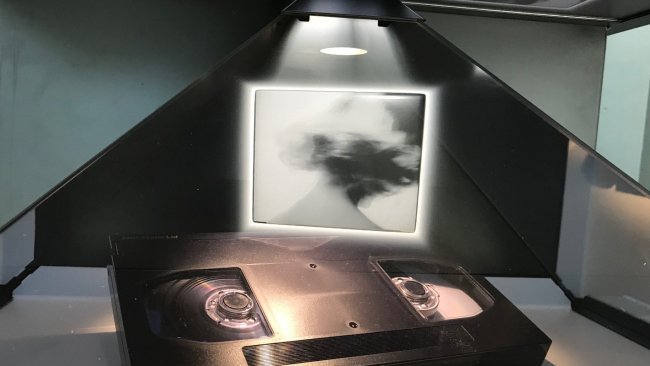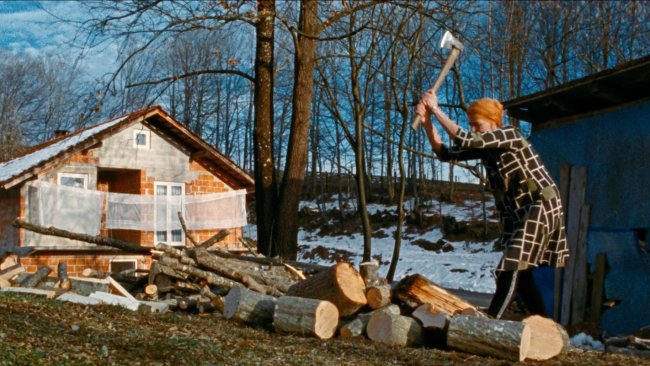When Thomas Imbach walked to God(ard)
On the occasion of Thomas Imbach Retrospective on DAFilms, Filmexplorer ventures to reflect upon the making-of of his next movie.
[…] he brings God back to the earth, to a village called Rolle, which is there at a certain, defined distance from where Imbach – and anyone of us – lives, and he will suspend Godard’s confinement…
[…] Independently of our participating in imagining the future film about the Godardian pilgrimage, the specificity of the filmic diary is that Imbach makes of the documentary footage of a making-of nothing but an auto-fictional story.
Text: Giuseppe Di Salvatore
Welcome to Instragramland! Two weeks and a posting diary by the Swiss filmmaker Thomas Imbach. I was not alone, I imagine (you’re never alone on Instagram…), in getting intrigued by his self-declared pilgrimage to Rolle, the Olympus where the God of cinema lives.
from Olympus back to Rolle
A forgotten God, I would say. Yes, of course, Jean-Luc Godard… He is now such a historical figure that being so important, and so historical, has given to most the alibi to have not to be confronted with him anymore. Or to not have to take seriously his refined thinking through film, his provoking aesthetic experiments. Rolle has become as distant as a remote town of Patagonia or Siberia; a place for a golden exile. Its God is so far away that even the wannabe parricides would not be at ease with him. One should invent and give a meaning to a “pappicide” perhaps (pappus: grandfather)… Jean-Luc is on the Olympus. He is “confined” on the invisible top of said Olympus. Does the honour act as a prison? A place of oblivion? Obsolescence?
This is why I have a lot of sympathy for Imbach’s decision to pay him a romantic visit. This sounds like a powerful gesture of secularization: he brings God back to the earth, to a village called Rolle, which is there at a certain, defined distance from where Imbach – and anyone of us – lives, and he will suspend Godard’s confinement… There is something light, potentially ironical in this gesture. It is actually light and heavy at the same time, for he really did make the pilgrimage – the Instagram diary is there to give us some evidence of the deed.
the performative core
We could also say that he repeated or “physically quoted” Werner Herzog’s infamous pilgrimage to Paris, in 1974, to pay a visit to Lotte H. Eisner, in order to prevent her death. Herzog did it alone, without a camera; and only four years later, in 1978, published a book on the journey, titled Of Walking in Ice. Imbach’s performance, instead, is recorded, “live” recorded, by David Charap at the helm of the camera, walking with him. This recording should apparently give the Swiss director the material for a film. Herzog wrote on his performance (the book) and Imbach will show his performance (the film). A shift upon which it would be interesting to reflect: do we not believe performances anymore? Do we need to see them on the screen, to have them recorded as pieces of evidence? What does a performance become when it is recorded? We will see what is going on with Imbach’s film; the performance will probably be only an occasion to create a filmic work that is not reduced to the recording of a performance.
the Romantic legacy
For the moment, what interests me is the Instagram diary. Is it a diary that one should not take too seriously? I would do so. It is systematic with one post per day, over fourteen days, and it is filmic, with short commentaries. It looks like an anthology of fragments which had to be chosen anyway, and the choice seems well made to my eyes. One could say that it is simply a marketing strategy for the film to come, a sort of preparation of the future audience. In the United States it is already a genre: from the staged scenes of the making-of until the publication of the trailer, the making of a movie is accompanied by a well-planned campaign, and the movie will already have a sort of showreel at the moment of its launch. Is it just a question of promotion? The fragments, the walking performance, the (pretention of) spontaneity, the diary format, the coincidence of life and work… these are all elements that suggest a precise aesthetic of Romantism. From the poetic of the Wanderer to Robert Walser’s promenades until Werner Herzog’s epic making-of, there is a clear line leading to Imbach’s apparently modest Instagram posting.
playing with interpretation
Follow me: this is the message of the video of the first day, an invitation. The posting is not just self-expression but is explicitly turned to the audience – as the self-medication of the Day 2 is theatrically and ironically turned to the audience. At Day 12 we will be invited to enter the new building of the Swiss Cinémathèque – and at Day 6 we hear the “cinematic” sound of the wind with references to Andrei Tarkovsky and Alexander Dovzhenko – or, as I should write, #tarkovsky and #dovzhenko. However, Dovzhenko was the pioneer of Soviet montage theory, something essential for Godardian aesthetic. There is no trace of cuts in Imbach’s video posting, but the fourteen short videos together already hint at a possible editing. Godard’s shadow also surfaces in the choice for «a little excursion to the isle of #rousseau» (Île Saint-Pierre, Day 8): it is a reference to Jean-Jacques Rousseau’s Rêveries du promeneur solitaire, where the geographical walking is, in a way, “internalised” as an autobiographical journey – or as filmic journey?
In fact, the relationship between landscape and the individual is a thread of Imbach’s filmic diary. Day 3: a rubbish collector makes us see the forest around Aarau; Day 5: a teenager on a little e-bike makes us see Solothurn; Day 9: the presentation of a gadget for cameras makes us see a river in the countryside. We see Switzerland in the enchanting colours of autumn. Will we see a Godardian Switzerland in the film to come? When we look at the automated making of bales of hay (Day 7), at a large quarry that is “composed” in the image with a little circle of little stones (Day 4, «We find traces of a new civilization»), at a single houses residential area crossed by a red Ferrari (Day 10), or at a rescue helicopter being loaded with a patient (Day 11), there is certainly more to “see” than a landscape. Technique, technology and modernity haunt the landscape, make it problematic, and a critical touch seems to be announced in those images.
reverie and auto-fiction
I could continue this improvised hermeneutic of a seemingly candid Instagram short videos, as projection, imagination and anticipation are exactly the job of cinema, but the important aspect I want to underline more concerns the format than its content. Independently of our participating in imagining the future film about the Godardian pilgrimage, the specificity of the filmic diary is that Imbach makes of the documentary footage of a making-of nothing but an auto-fictional story. «C’est une rêverie…» are his words on the last video after his having entered the God’s temple in Rolle. Imbach’s German accent reveals the reference to Rousseau (probably): what is a reverie here –is that the auto-fiction? The walking? Or the fact of having met God(ard)? Or the world as a whole, the meaning of life? Marina and Elisabeth (Day 13) encourage Imbach and Charap «to be even more radical», and refer to panic romantic themes like Nature, Creativity or Solidarity as being their God or, even better, their Source, their Essence, but on the last day Imbach’s face hesitates at the centre of the image («I am both relieved and sad» – the commentary says). In the background is the lake, the obsessive image of Godard’s last works. Auto-fiction has a chance to go beyond the codes of Romantism.
the consequences of publishing
And now, what about this publishing of mine responding to Thomas Imbach’s Instagram publishing? Would it help his creative filmmaking or (more) likely annoy it? What does it mean to publish about and during the making-of of a film? I don’t know. This is just an experiment – in the vein of Imbach himself, and perhaps of Godard himself.
Watch
(Almost) all of Thomas Imbach’s films are available on DAFilms website for his Retrospective, from the 22nd of November 2021.
Info
Thomas Imbach’s Instagram page
Go to Filmexplorer’s discussion of Thomas Imbach’s «Nemesis»
First published: November 20, 2021




